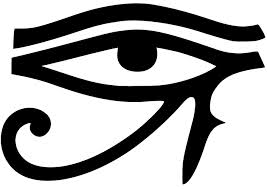“Please allow me to introduce myself
I’m a man of wealth and taste
I’ve been around for a long, long year
Stole many a man’s soul and faith”
So what’s the big deal about Saturn anyway? It’s just a far off planet that looks cool in pictures, but doesn’t have a direct effect on us Earthlings since we’re so far away. Or does it?
Would you be surprised to find out that there are strong suggestions in symbolic mythology that Saturn was once our sun, before the sun we know of today?
According to researcher David Talbott in his book, The Saturn Myth (1980), ” the evidence assembled in the following pages indicates that within human memory extraordinary changes in the planetary system occurred: in the earliest age recalled by man the planet Saturn was the most spectacular light in the heavens and its impact on the ancient world overwhelming.” Talbott goes on to state: “In the earliest age recalled by man the planet Saturn was the dominant celestial body. Ancient races the world over
record that there was once a “Golden Age”—a kingdom of cosmic harmony ruled by a central light god. Numerous sources identify this light god as the planet Saturn”. Talbott states further: “Accounts of Saturn’s appearance suggest that the planet hung ominously close to the earth. In early ritual and astronomy Saturn appears as the “primeval sun,” described as a figure of “terrifying splendor.” Today, Saturn appears as a bare speck
of light following the same visual path as the solar orb. But during the legendary Golden Age, Saturn stood in the north. Legends from every continent depict the primeval sun as an immense, fiery globe at the north celestial pole—the visual pivot of the heavens. Unlike the rising and setting solar orb, the primeval sun remained fixed in one place.”
David Talbott offers a visual concept of the story of our ancient sky in his documentary, Symbols of an Alien Sky
During the presentation, Talbott offers different symbolic representations of the ancient sky depicted by the ancients. The ancients used graphic representations of what they saw in the sky and how Saturn was a big part of our ancient sky. Consider the following images:
These images also play off of the combination of Saturn, Venus, and Mars that the ancients saw in the sky.
The question arises:
If Saturn was always as inconspicuous as it is at present, what could have caused the races of antiquity, as if by common consent, to give to Saturn the appellative “sun” or “the shining one” ? “The astrologers certainly must have found it increasingly contrary to reason to associate the star that gives us light and life with one of the palest, and the slowest of the planets.” from: http://www.varchive.org/itb/sunstar.htm#f_7
Also, why is the cross cultural iconography ultimately portraying the same event? Surely these culture were independent of each other, thus not influencing each others graphic depictions.
Besides the images in Symbols of an Alien Sky, there are two images that have multicultural usage that are not depicted in the documentary. However these two images have dark occult associations and are not linked by the documentary to Saturn. The images do have associations linked to features of Saturn that were most recently discovered by the NASA’s Cassini probe.
On the north pole of Saturn, this image was taken by Cassini on October 29th, 2006:
A summation of the photo from NASA’s site:
“A bizarre six-sided feature encircling the north pole of Saturn near 78 degrees north latitude has been spied by the visual and infrared mapping spectrometer on NASA’s Cassini spacecraft. This image is one of the first clear images ever taken of the north polar region as seen from a unique polar perspective.”
Bizarre to us in our current time, but not of a different epoch. If you follow the logic that symbols are graphic representations of events that happened before the advent of the written word, then what you are about to see may astound you.
Consider the following image related to north pole of Saturn and the symbol it’s tied to and that symbols adoption across multiple cultures:
The South pole of Saturn also reveals something rather astounding as well.
From: NASA Sees into the Eye of a Monster Storm on Saturn
“NASA’s Cassini spacecraft has seen something never before seen on another planet — a hurricane-like storm at Saturn’s south pole with a well-developed eye, ringed by towering clouds. This giant Saturnian storm is apparently different from hurricanes on Earth because it is locked to the pole and does not drift around.”
There is an image that I believe is associated with the south pole of Saturn:
Again, going back to how symbols emanate, taken from the Smithsonian National Museum of Natural History
Creating paintings and figurines
By 40,000 years ago
By this time, humans were creating two- and three-dimensional images of the world around them. By 17,000 years ago, they had developed all the major representational techniques including painting, drawing, engraving, sculpture, ceramics, and stenciling. Working on stone, ivory, antler, and occasionally clay, they created imaginative and highly complex works of art.
From the book The Symbolic Species: The Co-evolution of Language and the Brain by Terrence Deacon:
“Somehow, despite their cognitive limitations, our ancestors found a way
to create and reproduce a simple system of symbols, and once available,
these symbolic tools quickly became indispensable. This insinuated a novel
mode of information transmission into the evolutionary process for the first
time in the billions of years since living processes became encoded in DNA
sequences.”
I submit to the reader the following evaluation on the information put before you:
- The planet of Saturn at one time was indeed a major presence in the sky of Earth.
- The symbols that I link to Saturn are representations of what the ancients saw as their way of communicating to future generations.
There is another little tidbit that may confirm the theory about the Saturn sun and that is from Jonathon Swift, author of the classic novel Gulliver’s Travels. Swift wrote an interesting passage in the poem entitled PANEGYRIC ON THE DEAN, IN THE PERSON OF A LADY IN THE NORTH ‘ 1730.
“When Saturn ruled the skies alone,
(That golden age to gold unknown,)
This earthly globe, to thee assign’d,
Received the gifts of all mankind.
Ten thousand altars smoking round,
Were built to thee with offerings crown’d;
And here thy daily votaries placed
Their sacrifice with zeal and haste:
The margin of a purling stream
Sent up to thee a grateful steam;
Though sometimes thou wert pleased to wink,
If Naiads swept them from the brink:
Or where appointing lovers rove,
The shelter of a shady grove;
Or offer’d in some flowery vale,
Were wafted by a gentle gale,
There many a flower abstersive grew,
Thy favourite flowers of yellow hue;
The crocus and the daffodil,
The cowslip soft, and sweet jonquil.
But when at last usurping Jove
Old Saturn from his empire drove,
Then gluttony, with greasy paws
Her napkin pinn’d up to her jaws,”
Maybe you think Swift was just waxing poetic and was rambling on about Saturn, however before you do, consider the following from:Jonathan Swift and the moons of Mars
“When the two Martian moons, Phobos and Deimos, were eventually found, by Asaph Hall at the US Naval Observatory, their orbits proved to be quite similar to those described in Swift’s novel. Phobos is actually 6,000 km from the surface of Mars and revolves around Mars in 7.7 hours, whereas Swift gave the values 13,600 km and 10 hours, respectively. Deimos averages 20,100 km from Mars and orbits in 30.3 hours; Swift gives 27,200 km and 21.5 hours, respectively.”
Was Swift merely guessing? Lets look at another view of Swift’s proclamations, from The Mysterious Moons of Mars:
“How was Swift able to predict the existence of the moons and their attributes so well? Some have seriously suggested he had psychic powers. More likely, though, Swift may have employed the same logic as the French writer Voltaire did a quarter century later when he also predicted two Martian moons. Voltaire knew that the inner planets, Mercury and Venus had no moons and the outer planets, Jupiter and Saturn each had many. Earth had one. It seemed likely to Voltaire that Mars, that next out from Earth, probably had at least two.
Even if Swift had employed the same logic to figure the number of moons his estimate on the duration of their orbits was still startlingly accurate.”
Swift is certainly an intriguing personage as it relates to Saturn. Perhaps he may be the Immanuel immanuel Velikovsky of his day. There is more to come between the relationship between Jonathon Swift and Saturn.
I’ll leave the reader with this as a preview for the next part;
Pleased to meet you
Hope you guess my name
But what’s puzzling you
Is the nature of my game













Having read through your posts, you go into a number of details that I had not covered or thought of. I have throughout the years being doing some research on Maryland and I would like to correspond with you and share some information that I have found concerning the original site ‘Washington DC” & how ‘Congress’ purchased it. I think you are seeing what I am seeing and I believe this would be helpful to further your investigations into this important and very intriguing subject. I too am blown out by the works of the Informer and Montgomery as they have provoked me to do my own research, not only in this area but countless other areas.